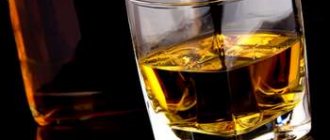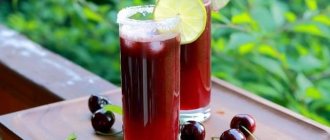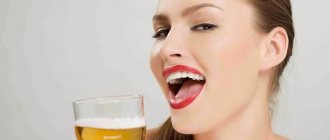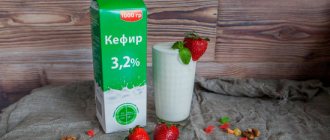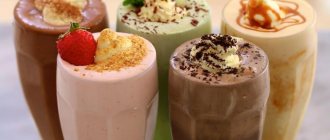Beer is an intoxicating drink whose history dates back centuries. Almost every person has tried this drink at least once in their life. According to statistics, the global demand for beer is as high as for water or tea. People are increasingly beginning to adhere to various diets in their lives. Therefore, they quite rightly have questions about what the calorie content of beer is per 100 grams , whether it is harmful or beneficial to the body, and whether it can be included in the diet as part of a diet.
Calorie content per 100 ml
To understand what makes up the energy value of an intoxicating drink, you need to get acquainted with its chemical composition.
It included:
- various acids - malic, gluconic, succinic, acetic and citric,
- vitamins C and B6,
- trace elements calcium, magnesium, zinc and others.
Natural beer is made from hops, yeast, malt and water. The alcoholic degree in it appears after the start of the fermentation process. Typically the percentage of alcohol is 0.5-8%.
The ratio of proteins, fats and carbohydrates per 100 ml, as well as calorie content are presented in the table:
| Index | Quantity |
| Carbohydrates | 4.5 g |
| Squirrels | 0.6 g |
| Fats | 0 g |
| Number of calories | 41 kcal |
The latter indicator will also depend on the variety and ingredients used to prepare the drink.
How many calories are in light varieties?
People are divided into several categories, the most extensive among them being light beer lovers. They value this particular drink for its mild taste, pleasant aroma and dense foam. It perfectly quenches thirst and is the most popular in the world. On average, how many calories are in 1 liter of light beer? This is approximately 420 kcal. Appetizers in the form of ram, smoked sausages, pork ribs, and bread croutons are suitable for light varieties.
How many calories do non-alcoholic hops have?
Non-alcoholic beer is an excellent alternative option for those people who adore an intoxicating drink, but cannot afford to feel the feeling of intoxication. This drink is also chosen by those who carefully watch their weight.
Please note: Calorie content will be significantly lower, in 1 liter - only 260 kcal. During preparation, the drink undergoes double filtration, fermentation processes are reduced, and as a result, there is no alcohol in the composition.
How many calories are in dark varieties?
When preparing a drink, different amounts of malt can be added and the degree of roasting can be changed. Therefore, the finished drink will have a different color. Dark beers have a characteristic bitter aftertaste and sweet notes, which is why women like them so much. But if you are interested in which beer has the fewest calories, then dark varieties are definitely out of this list, since 1 liter of dark beer contains 480 kcal.
Energy value of live and unfiltered drink
This type of intoxicating drink called live beer deserves special attention. It is usually sold on tap, does not contain hormones, preservatives and is not pasteurized. Therefore it is not sold in cans or bottles. Live beer has a bright and memorable taste, thick foam that will not settle for a long time. Also contains live yeast, which significantly reduces shelf life. However, such a draft drink is more beneficial for the body, since it is not filtered. There are 39 calories per 100g of unfiltered hops.
No harm to your figure
The beer ingredient is added to various cosmetic products: shampoos, conditioners, hair masks, masks to get rid of acne, etc. The benefit of the drink lies in the content of useful substances. But is this drink good for the body and figure?
Scientists confirm that a small amount of beer, when consumed regularly, reduces the risk of heart disease, helps cleanse the circulatory system of harmful elements, lowers blood pressure and dilates blood vessels.
Harm occurs only with excessive use. In men, the mammary glands enlarge and a “beer” belly grows. Women experience aging skin, blue circles under the eyes, cellulite, and an increased risk of dementia. This is due to the fact that during fermentation, harmful and even dangerous products are formed in the drink - methanols, aldehydes and ether compounds.
Important! Regular consumption of large quantities of the drink leads to obesity not only in women, but also in men. The reason for this is the presence of plant estrogen (female sex hormones) in alcohol.
Not only does this drink lead to disastrous results for your figure, but also eating snacks with it. The calorie content of chips per 100 g is 540-550. If you consume salted roasted peanuts with beer, then this is another 626 kcal per 100 g.
If we talk about salted or dried fish, then it is not so much the calories (235 kcal per 100 g) that cause harm, but the excess of salt. It retains fluid in the body, and this leads to cellulite.
In addition, beer causes an insatiable appetite, lowering blood sugar levels, and a person eats more than normal. The more beer you drink, the more you will want to eat it with something.
Thus, if you do not snack on various high-calorie foods, your body will not receive any extra calories. However, the strong appetite caused by beer will still be present.
Those who do not want to gain weight from drinking drinks should fulfill several conditions:
- do not overeat during feasts;
- try to choose snacks that are good for digestion and figure and with a low amount of calories;
- use additional vitamin complexes, because beer has diuretic properties and, together with water, “drives out” minerals and vitamins;
- engage in physical exercise, go to the pool and gym, that is, avoid physical inactivity;
- Avoid excessive consumption of beer and other alcoholic beverages.
To reduce the risk of gaining extra pounds while drinking beer, follow the advice of brewers:
- it is better to drink from a glass, because the less it comes into contact with air, the slower it oxidizes and irritates the mucous membrane of the digestive tract;
- it is better to drink beer at a temperature of 5-15 degrees Celsius, because this is how all its qualities are revealed;
- You cannot mix different alcoholic drinks, for example, beer with vodka or wine, it is better to choose one;
- It’s best to snack on low-calorie cheese or seafood;
- women should not drink more than 500 ml per day, and men should not drink more than 1 liter;
- it is better to replace bottled with live draft, as it is more natural and without the addition of preservatives;
- exclude fast food, mayonnaise and fatty foods from your snack list;
- exercise, burning the extra calories that entered your body while drinking beer.
Calorie content of 1 liter
Depending on the type of alcoholic product, variety, its nutritional value can vary between 260-480 kcal per 1 liter.
What criteria does the indicator depend on?
The caloric content of beer will be determined by the type and method of its brewing. The natural drink is made from roasted malt or barley, which have a high sugar content. After a while, in order for the characteristic bitter taste to appear, hops are added to it, and yeast is added to start the fermentation processes.
It is fermentation that allows alcohol and carbon dioxide to begin to be released. Since each individual variety can be prepared according to an individual recipe with a specific set of ingredients, the amount of sugar and yeast in each of them can vary significantly. Dark varieties are considered the most nutritious, and soft drinks the least.
About beer:
Beer is the most common low-alcohol drink in our area, and not only that. The popularity of this drink is very great all over the world, especially increasing with the onset of summer.
What is beer?
This is a low-alcohol drink that is produced in huge quantities all over the world using the method of alcoholic fermentation of malt wort, using special brewer's yeast and, traditionally, with the addition of hops. The result is a drink with an alcohol content, depending on the variety, from 3 to 6 percent.
The main components necessary for the production of beer are: water, malt, most often barley, brewer's yeast and hops.
Malt is obtained from barley or wheat grains. To do this, the grains are soaked in water and germinated in order to convert the starch found in the grains into a soluble state. To stop the germination process, the grains are roasted in special ovens with hot air. The type of future beer depends on the degree of roasting, that is, the beer will be light or dark. There are types of beer that are made from different types of malt.
Hops are not used in beer production to make beer “stronger”. It’s just that hops give beer a pleasant bitter taste, increase the stability of beer and its shelf life.
Many of us drink beer very often. This low-alcohol drink is especially popular on hot summer days, as it quenches thirst very well. Hence the increased interest in the calorie content of beer. After all, the term “beer belly” has become very firmly entrenched among the people. And many believe that beer can affect the slimness of our figure. Well, how many calories are in beer? By the way, not much. In terms of calorie content, beer differs little from other food products that we consume every day.
Where then does this belief come from that people get fat from beer? The point is apparently that beer is usually drunk with crackers, nuts and other products, the calorie content of which is much higher than the beer itself. This is where the excess weight comes from...
Beer is a valuable food product that contains many nutrients. It has tonic properties, increases appetite, and promotes food absorption. In moderation, beer is beneficial for any healthy person. This low-alcohol drink contains from 1.5 to 6% alcohol.
Beer is a very common and favorite drink that has been known to people since ancient times. Despite the fact that the birthplace of beer was the countries of the hot sun, the drink does not withstand long-term exposure to sunlight and is very demanding regarding temperature. So, with a sharp change in temperature, the beer becomes cloudy and loses its taste.
The finished beer is filtered and poured into dark green or dark orange beer bottles with a capacity of 0.5 or 0.33 liters or into beer barrels with a tarred interior with a capacity of up to 150 liters. Beer undergoes mandatory sealing.
The ideal temperature of beer at which its qualities are most fully felt is 10 °C. In summer, the beer is cooled to this temperature, and in winter it is slightly warmed up.
You can serve beer in bottles at a temperature of 8-10 °C. Only light beer can be poured into decanters or closed jugs, as well as into special beer mugs. Homemade beer is also served in jugs.
Drink beer chilled. It cannot be mixed with other drinks, poured from one glass to another, shaken or topped up with a fresh portion into an unfinished glass (although some people break this rule).
When opening a bottle, try to do it silently and do not pour the beer over the edge. Never pour this fragrant drink to the brim of the glass, as it is necessary to leave room for foam.
To properly pour beer, keep the glasses tilted towards the bottle. Pour the beer in a thin stream. The beer glass is held with the whole hand. If it has a stem, it is held like a glass of wine - with three fingers at the bottom of the stem. But most often beer is drunk from mugs with handles. It seems strange, but many people do not know what they should drink beer from. Know that in the West, true beer lovers drink this drink only from clay mugs with lids. Those who don’t care what they drink from drink from glass mugs. And recently, a new trend has emerged - serving beer in glasses.
In the end, it’s not that important what you drink your beer from. There are people who prefer to drink the divine drink only from bottles
But this does not mean that they do not belong to the army of true beer connoisseurs.
Now let’s answer the question, how many calories are in beer:
Is it possible to drink beer and lose weight?
Many people associate regular beer consumption with the appearance of a “beer belly” and the accumulation of excess weight, and over a short period of time. But this opinion is wrong.
Please note: It is not the intoxicating drink itself that contributes to the accumulation of fat in the body, but the food that a person uses as a snack.
People don’t notice how much croutons, chips, crackers, cheeses, ribs, fish and much more they consume along with hops. All this has a very high calorie content. The drink itself is not considered a high-calorie product. One bottle is equivalent to a standard chocolate bar. Some nutritionists even offer people several types of beer diets that promote weight loss.
Beer, if it is natural and of high quality, contains certain ingredients that help speed up metabolism, which also has a positive effect on the process of losing weight.
How much beer can you drink while losing weight?
If a decision has been made to use a low-alcohol product as an ingredient in a weight loss menu, then its dosage should not exceed 500 ml per day. This will help you lose weight if you just give up any types of snacks to go with it, especially fried, salty, smoked foods.
So let's figure out how many calories are in beer?
In this matter, in fact, not everything is as scary as it might seem at first glance; depending on the strength of the beer, the type of drink itself, this indicator can contain from 30 to 80 calories per 100 grams of product; in fact, this is not so much.
Well, let's figure out which of us drinks 50 or 100 gram beer with our hands - ha, throw a slipper at me if I'm wrong, probably this indicator will be 0.
Rather, most of us drink beer in half-liter mugs or beautiful glasses, this does not change the essence, but many of us drink more than one glass in the evening, so the caloric value can immediately be increased by 10 or even 15. So Calculate How many calories you drink in the evening this is the norm of an ordinary statistical person for a day or even more. So it turns out that dreaming and a good figure in a flat tummy is not worth it. If you drink beer by the liter or even by the hips, accordingly, the figure of beer lovers is far from ideal does not depend on the calorie content of beer, but depends from the amount of this pleasant drink taken on the chest. The calorie content of light beers and dark beers is not very different, so light beers have a calorie content of about 42-50 calories per 100 grams, and dark beers have a calorie content of about 60 calories per 100 grams, respectively It's not that bad if you drink these drinks in moderation.
Accordingly, How many calories are in both types of beer you can easily find out on the label True, recently manufacturers write in very small print, this is also not accidental for us to pay attention Only to the beautiful name, while not paying attention to the composition of what it is made of this or that drink, mostly now they don’t produce natural beer, but they produce beer drinks, which is not at all similar to natural beer. Another important factor that affects the calorie content of beer is the alcohol contained in your glass. The higher the temperature of your favorite drink, the more calories it will contain - this is an indisputable fact.
Many people may now think that there are no calories in non-alcoholic beer; I hasten to disappoint you; in non-alcoholic beer there can be significantly more calories than in alcoholic beer. Because non-alcoholic beer, unlike alcoholic beer, is generally unknown. What it is made of. There may be significantly more harmful impurities present than in regular beer. The standard calorie content of non-alcoholic beer will correspond to about 30 calories per 100 grams of liquid, this figure is even less than in regular beer, but it only applies to a well-prepared drink. However, one should not think that non-alcoholic beer contains no alcohol at all; its indicator is approximately 0.3% alcohol.
The higher the temperature of your favorite drink, the more calories it will contain - this is an indisputable fact. Many people may now think that there are no calories in non-alcoholic beer; I hasten to disappoint you; in non-alcoholic beer there can be significantly more calories than in alcoholic beer. Because non-alcoholic beer, unlike alcoholic beer, is generally unknown. What it is made from. There may be significantly more harmful impurities present than in regular beer. The standard calorie content of non-alcoholic beer will correspond to about 30 calories per 100 grams of liquid, this figure is even less than in regular beer, but it only applies to a well-prepared drink. However, one should not think that non-alcoholic beer contains no alcohol at all; its indicator is approximately 0.3% alcohol.
Another important factor that affects the calorie content of beer is the alcohol contained in your glass. The higher the temperature of your favorite drink, the more calories it will contain - this is an indisputable fact. Many people may now think that there are no calories in non-alcoholic beer; I hasten to disappoint you; in non-alcoholic beer there can be significantly more calories than in alcoholic beer. Because non-alcoholic beer, unlike alcoholic beer, is generally unknown. What it is made of. There may be significantly more harmful impurities present than in regular beer. The standard calorie content of non-alcoholic beer will correspond to about 30 calories per 100 grams of liquid, this figure is even less than in regular beer, but it only applies to a well-prepared drink. However, one should not think that in non-alcoholic beer there is no alcohol at all, its indicator is approximately 0.3% alcohol.
To summarize, if you really like beer but don’t want to lose your slim, good figure, then you will have to limit the consumption of this drink to about 1 bottle per day, and choose lighter varieties and it is advisable to limit yourself to typical beer snacks.
Menu for the beer diet
People who have chosen a beer diet should know that the beer in it is not an additional product for the diet. It should serve as a substitute for other dishes. The low-alcohol product allows you to get rid of the feeling of hunger. When pursuing the goal of losing weight, you need to choose exclusively light varieties. You need to give up dark varieties during the diet.
Example of a weekly diet:
| Day of the week | Menu |
| 1 | Beer 2 bottles, portion of buckwheat porridge on water |
| 2 | 2 bottles, boiled chicken |
| 3 | Drink 1 liter of beer in 4 servings, salmon steak |
| 4 | 2 bottles, boiled beef |
| 5 | 1 liter in 4 doses, unlimited vegetables |
| 6 | 2 bottles and filtered water in any volume |
| 7 | Fasting day on filtered water |
Calorie content of beer of different brands
Russian beer
| Name | Calorie content per 100 ml |
| Baltika No. 0 non-alcoholic | 33 |
| Baltika No. 2 light | 40 |
| Baltika No. 3 classic | 42 |
| Baltika No. 4 original | 54 |
| Baltika No. 5 gold | 45 |
| Baltika No. 6 porter | 61 |
| Baltika No. 7 export | 45 |
| Baltika No. 8 wheat | 45 |
| Baltika No. 9 strong | 60 |
| Baltika No. 20 anniversary | 50 |
| Baltika LITE | 37 |
| Baltika Cooler | 41 |
| Baltika Cooler Lime | 41 |
| Large mug Strong | 54 |
| Large mug Amber | 34 |
| Large mug Barley cask | 39 |
| Volga | 46 |
| DV Live | 43 |
| Ochakovo | 46 |
| DV Classic | 39 |
| DV Strong | 36 |
| DV Ledyanoe | 43 |
| DV Svetloe | 43 |
| Don Live | 39 |
| Don Classic | 39 |
| Don Ledyanoe | 39 |
| Don Yuzhnoye | 39 |
| Zhigulevskoe | 42 |
| Indiana Juice | 73 |
| Merchant | 46 |
| Hmelöff | 26 |
| Nevskoe | 45 |
| Siberian barrel | 46 |
| Ural master | 45 |
| Chelyabinsk | 45 |
| Yarpivo | from 43 to 54 |
| Arsenalnoe | from 45 to 57 |
| Ochakovo Original | from 43 to 46 |
| Ochakovo Classic | 46 |
| Ochakovo Special | 42 |
| Barley Ear Live | 42 |
| Barley Ear Strong | 62 |
| Barley Ear Light | 42 |
| Capital Double Gold | 46 |
| Brewer's secret | 42 |
| Hunting Strong | 67 |
| Siberian Crown | 42 |
Imported beer
Many people like Czech, German, Dutch, Belgian and English beer. Some of these drinks are rarely found on sale, but some are quite popular in Russia.
| Name | Calorie content per 100 ml |
| Budějovický Budvar (Budweiser) | from 41 and more, depending on the strength |
| Černá Hora (Black Mountain) | from 45 |
| Gambrinus (Gambrinus) | 44 |
| Krušovice | from 36 to 44 |
| Velkopopovický Kozel (Velkopopovicky Goat) | 36 |
| Pilsner Urquell | 45 |
| Staropramen (Staropramen) | 38 |
| Czech Republic, Starobrno | 44 |
| Ale (bitter, mild, brown ale, Scotch) | 41 |
| El Chimay Blue (Grande Reserve) | |
| Belgian ale Delirium Tremens | |
| Chimay Rouge | |
| Duchesse de Bourgogne | |
| Chimay Triple | |
| Belgium, Tripel Karmeliet | 51 |
| Duvel | 62 |
| Fuller's London Porter | 48,5 |
| Gulden Draak | 83 |
| Wychwood Hobgoblin | 36 |
| Van Honsebrouck Kasteel Tripel | 81 |
| Piraat | 81 |
| Schneider Weisse TAPX Mathilda Soleil | 40 |
| Augustiner Dunkel | 50 |
| Heineken Premium Quality | 43 |
| Amsterdam Navigator | 74 |
| Edelweiss | 46 |
| Desperados | 58 |
| Fuller's | 39.5 |
| Old Gold | 44 |
| Blanche de Bruxelles | 43 |
| Holba Lahvac | 49.5 |
| Kelt | 46 |
| Holsten Premium | 43 |
| Kulmbacher | 44,5 |
| 3 Horses | 51 |
| Lvovskoe | 40 |
| A. Le Coq English Ale | 46 |
| Krinitsa | 50 |
| Guinness Draft | 35 |
| Ahornberger Landbier Würzig | 46 |
| Amstel Premium Pilsener | 42 |
| Miller Genuine Draft | 45 |
| Beck's | 42 |
| Castel ARGO | 49 |
| Kilkenny red | 41 |
| Coors Fine Light | 41 |
| Erdinger Weißbier | 44 |
| Samson Darc | 41 |
| Guinness Draft | 35 |
| Franziskaner | 46 |
| Grolsch Special Malt | 20 |
| Murphy's Irish, red | 40 |
| Hunters Red Fox | 50 |
| Kingfisher Cream Stout | 45,8 |
| Kronenbourg 1664 Blanc | 47 |
| Paulaner Hefe-Weißbier | 47 |
| Efes Fusion | 44 |
| BagBier | 42 |
| Redd's | 56 |
| Primator | 185 |
| MegaBier | 42 |
| Bernard Cherne | 48 |
| Stella | 44 |
| Tuborg | 41 |
| Weihenstephaner | 44 |
| Black Isle Organic Blonde | 42 |
| Bertinchamps Blonde | 46 |
| Zubr | 36 |
| Budweiser Budvar Original | 44 |
| Paulaner Hefe-Weisbier light wheat non-alcoholic | 20 |
| Beck's light non-alcoholic | 21 |
| Krombacher non-alcoholic | 27 |
| Zlaty Bazant (Golden Pheasant) non-alcoholic | 24 |
| Bag Bier light | 42 |
| Siberian Crown classic light | 46 |
| Paulaner (Paulaner Hefe-Weissbier) wheat unfiltered light | 47,3 |
| Hunting strong | 67 |
| Krusovice (Krusovice dark) dark | 35,8 |
| Guinness Original | 47 |
| Leffe Radieuse dark | 60 |
| Leffe Brune dark | 61,2 |
| Dab Original | 39 |
| Guinness Original | 47 |
| Staropramen | 35 |
| Pilsner Urquell | 44,2 |
| Amstel | 40 |
| Heineken | 40 |
| St. Paul, blonde | 50 |
| Tiger | 45 |
Beer is a medium-calorie drink. It is not devoid of beneficial properties and does not harm the figure when used rarely in reasonable quantities. The clear answer to the question of how many calories are in beer is from 20 to 60 kcal, if we consider the most popular drinks. We should not forget about the alcoholic component of the product. Abuse of it can lead to the development of beer alcoholism and diseases of internal organs.
Positive effects of live beer drink
Live beer contains a large amount of minerals and vitamins that have a beneficial effect on the body. But also do not forget that this drink also contains alcohol. In small proportions, dark unfiltered beer has the following beneficial effects on humans:
- Nourishes the body's cells with vitamin B. And this improves the structure of hair, nails, skin and teeth. Vitamins stimulate the body, saturate it with energy and strength.
- The composition of the “live” alcoholic drink includes organic acid, which helps to quickly absorb heavy carbohydrates and proteins. Therefore, when drinking beer, intestinal function is stimulated. In addition, frequent urination allows you to most effectively remove all toxic substances from the body.
- The antioxidants included in the drink help reduce the risk of malignant tumors and reduce the likelihood of a heart attack or stroke.
- The high content of iron, magnesium and potassium helps strengthen the body and immune system.
- In optimal quantities, beer normalizes blood pressure and improves the functioning of the cardiovascular system. Therefore, it is recommended to drink it at low blood pressure.
- This is a low-calorie drink, which has a beneficial effect on the body; it does not cause hunger.
If you drink unfiltered beer in an acceptable amount and not systematically, it will have a positive effect on the body and bring pleasure to the person. There may be an improvement in health and a surge of strength. But we must not forget that this is alcohol, and with constant use, alcoholism can develop, from which it is very difficult to recover.
Nutritional value and chemical composition of “Light beer (0.5 l)”.
The table shows the nutritional content (calories, proteins, fats, carbohydrates, vitamins and minerals) per edible portion.
| Nutrient | Quantity | Norm** | % of the norm in 100 g | % of the norm in 100 kcal | 100% normal |
| Calorie content | 230 kcal | 1684 kcal | 13.7% | 6% | 1679 g |
The energy value of light beer (0.5 l) is 230 kcal.
What determines the energy value of the drink?
The calorie content of the drink is affected by production technology and strength. The more alcohol in the drink, the more sugar it contains, the higher the calorie content.
Dark beers are stronger and therefore have higher calorie content. Non-alcoholic beer has the lowest energy value. Its alcohol content is less than 1.5%.
